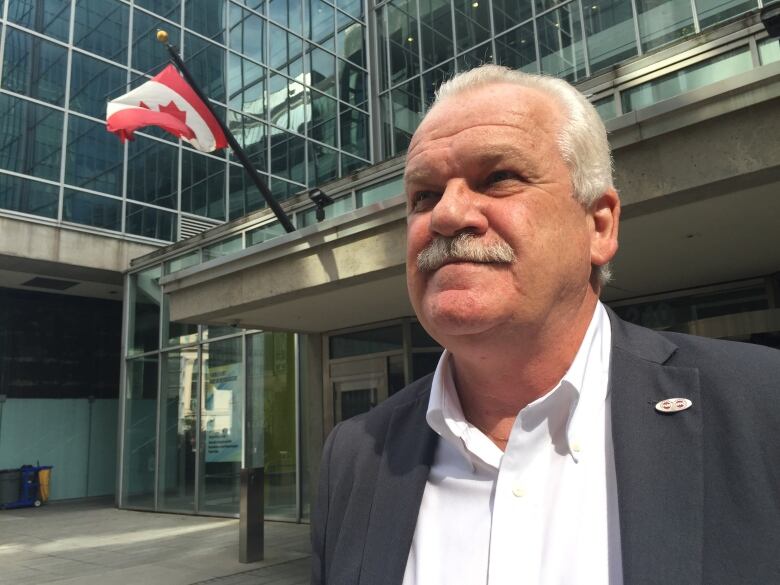Phoenix payroll system under budget? Sounds like creative accounting to expert
Federal government continues to pour millions into failed Phoenix project, with no end in sight

The implementation costs of a payroll system that was delayed and has never worked properly actually came in under budget at a cost of $307 million, the federal government says.
That figure is $2 million less than what the government projected several years ago but it doesn't include the multimillions earmarkedfor fixing Phoenix.
Over the past year and a half, the government has had to announce about $400 million in new Phoenix spending, and as more federal workers continue to receive incorrect pay, the government can only estimate its final price tag for an operation that may not function fully for years to come.
It is already inching up toward $750 million.
The rising costs and limited information from government has left MP Nathan Cullen,the New Democrat finance critic, "dumbfounded."
"The tab for all taxpayers keeps going up," Cullen said on Parliament Hill Thursday. "What is it finally going to cost us? It's taking all of our effort just to drag basic information out of this government."
CBC requested an interview with Carla Qualtrough,the ministerof public services and procurement, but she was not available.

Roman Klimowicz, a former principal analyst at Treasury Board Secretariat who was involved in huge procurement projects, told CBC News that information technology projects usually do cost more than first expected, but sometimes the government isn't completely transparent about the final tally.
"Open up your kimono and tell everybody what happened and be truthful about it," he suggests. "Whatever the amount, it's probably a lot more than the amount that is published. It comes under creative accounting."
How we got here
Bureaucrats initially proposed revamping the government's aging pay system back in 2005. The first proposals were rejected by Treasury Board managers, CBC has learned. But by 2011, the department then called Public Works and Government Services Canada had a plan in place to create Phoenix.
The initiative will generate savings of up to $78.1 million per year across government.-Public Works document in 2011
Klimowicz said it was optimistic for bureaucrats to think the pay modernization project was actually going to save money.
"But you can't get a project approved saying I'm going to spend $300 million and by the way, it can't save us any money," said Klimowicz. "It's very difficult to get the government to agree to spend a lot of money if they don't think that there's a downstream benefit financially."

Over the years, internal government documents have boasted that the Phoenix project was on time and on budget. The department's performance report for 2015-16 says, "The consolidation of pay services project successfully completed its project scope on time and on budget in December 2015."
New and future costs
We now know the $78 million in departmental savings that was promised by Phoenix was never realized. In fact, 100 departments and agencies have been forced to spend extra money to deal with the fallout over the Phoenix system since it was implemented in February 2016.
From Vancouver to Shawinigan to Halifax, about a dozen satellite pay centres have been set up to help manage the problems the Phoenix system introduced.
The Public Service Alliance of Canada said about 1,000 advisers were laid off or left government when a new, centralized pay centre was established in Miramichi, N.B., but now a hiring blitz has begun.
The new hiring incentives include a $4,000 bonus to attract and retain compensation advisers. Pay centre workers are earning double overtime.
Compensation advisers from different parts of the country tell CBC they can do "all the overtime you want." The government is now retendering contracts with technology companies.

Already, 36 outside firms have been involved in the government's pay project, including the primary contract with IBM Canada.
University of Ottawa political science student and part-time web developer Lucas Cherkewski examined open government websites to seek out all the contracts the procurement department awarded for Phoenix.
"The data is kind of open in name only," said Cherkewski. "We call that transparency theatre."
So he built a tool to help tabulate the contracts, discovering hundreds of millions of dollars in awards under "pay modernization project."
But Public Services and Procurement Canada tells CBC the database that details the Phoenix contracts is actually flawed, and some contracts have been mislabeled in the open data.
The department has not published corrected data.
The fix
At the end of August, the government gave the new role of fixing Phoenix to Danielle May-Cuconato, an assistant deputy minister. The new task was called "Pay Stabilization Project."
Meanwhile, the architects and initial overseers of Phoenix are long gone, with their awards and bonuses.
"In industry, if something had gone as badly as this, there would have been several firings, right up to and including the person in charge of the whole organization," said Klimowicz. "In government, that doesn't happen."
While the unions said they're working closely with the government to try to fix the system, there's still a lot of disappointment and anger that workers are still not being properly paid. It could take years and millions more dollars to finally get the system working right.
"I'm convinced if somebody came along tomorrow and said here's a magic button, it's going to fix Phoenix, and it's going to cost you $5 billion, this government would buy it, and say, 'OK fine, if this is what it's going to take to fix it, we want it,'" said ChrisAylward, vice-president of the Public Service Alliance of Canada.













_(720p).jpg)


 OFFICIAL HD MUSIC VIDEO.jpg)
.jpg)



























































































